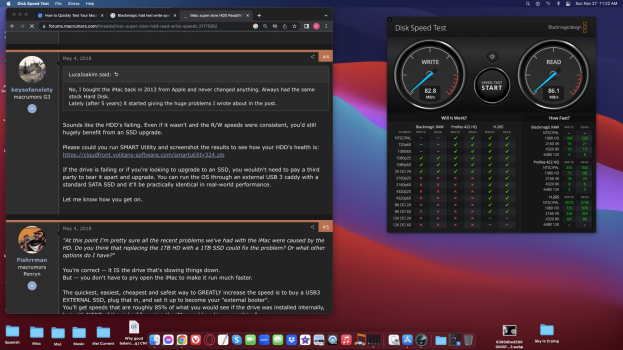What KIND of drive is inside the iMac?
Fusion drive, or platter-based hard drive?
How big is your current drive (how much total capacity)?
A 2019 iMac should have USBc ports with USB3.1 gen2 capabilities.
So...
You should be looking for an SSD in a USB3.1 gen2 enclosure.
Or... get an nvme "blade" SSD and put it into an enclosure yourself.
USB3.1 gen2 should give you read speeds (using Blackmagic) in the 800-920MBps range.
This will transform the iMac's speeds -- boost them WAY up.
My suggestion for a drive:
Samsung t7 "Shield":
Samsung T7 Shield Portable SSD delivers high performance on-the-go, not matter the terrain. It has an IP65 rating for water** and dust* resistance, with Dynamic Thermal Guard to manage heat control. Transfer huge files instantly. USB 3.2 Gen 2 and PCIe® NVMe™ achieve soaring sequential read/write...
www.amazon.com
Got one myself recently, very pleased with it.
And I'm not a guy who previously bought "ready to use" drives (I once preferred to buy a "bare" drive and enclosure and "do it myself").
You didn't tell us which version of the OS you're using.
When you have the new SSD, format it for:
- High Sierra or earlier -- Mac OS extended, journaling enabled, guid partition format
- Mojave or later -- APFS, GUID partition format.
(you can erase any proprietary software that comes with the drive, you don't need it)
Then use either SuperDuper or CarbonCopyCloner to clone the contents of your internal drive to the external. Both of these are FREE to use for 30 days, doing things my way will cost you nothing.
Finally, set the external to be the new boot drive using the startup disk pref pane.
Very easy, and you will come back here and tell us you can't believe how big a difference the SSD made in overall performance.



